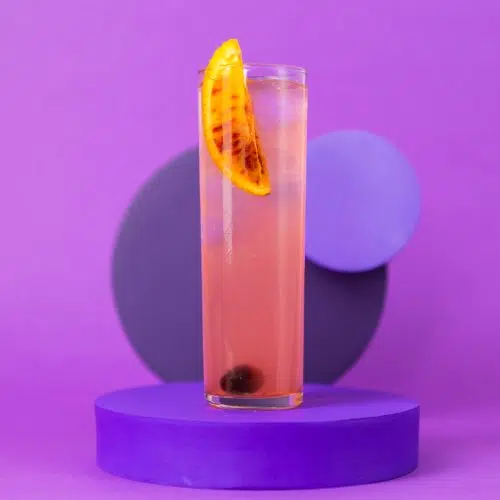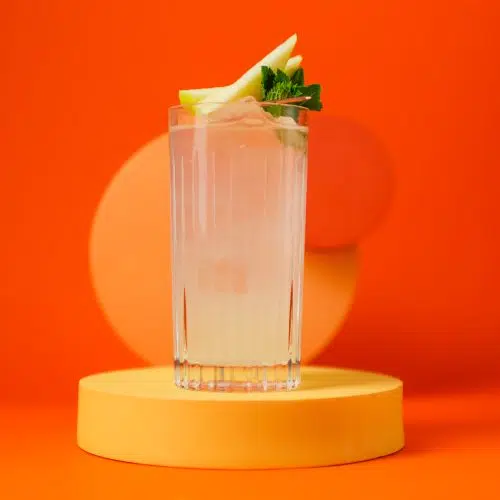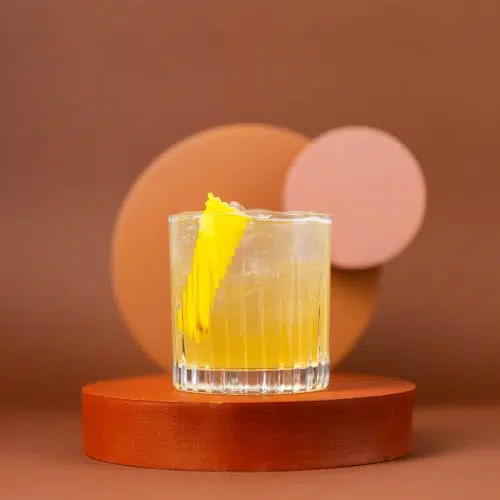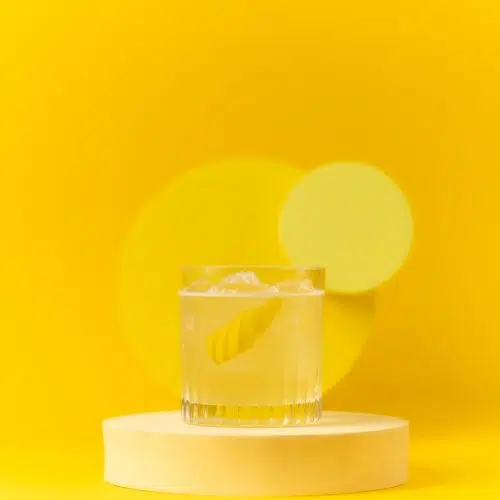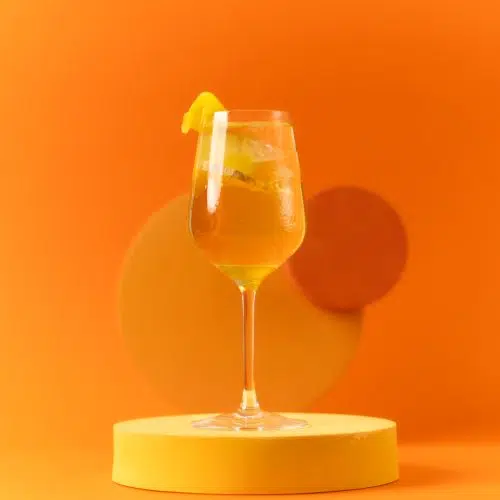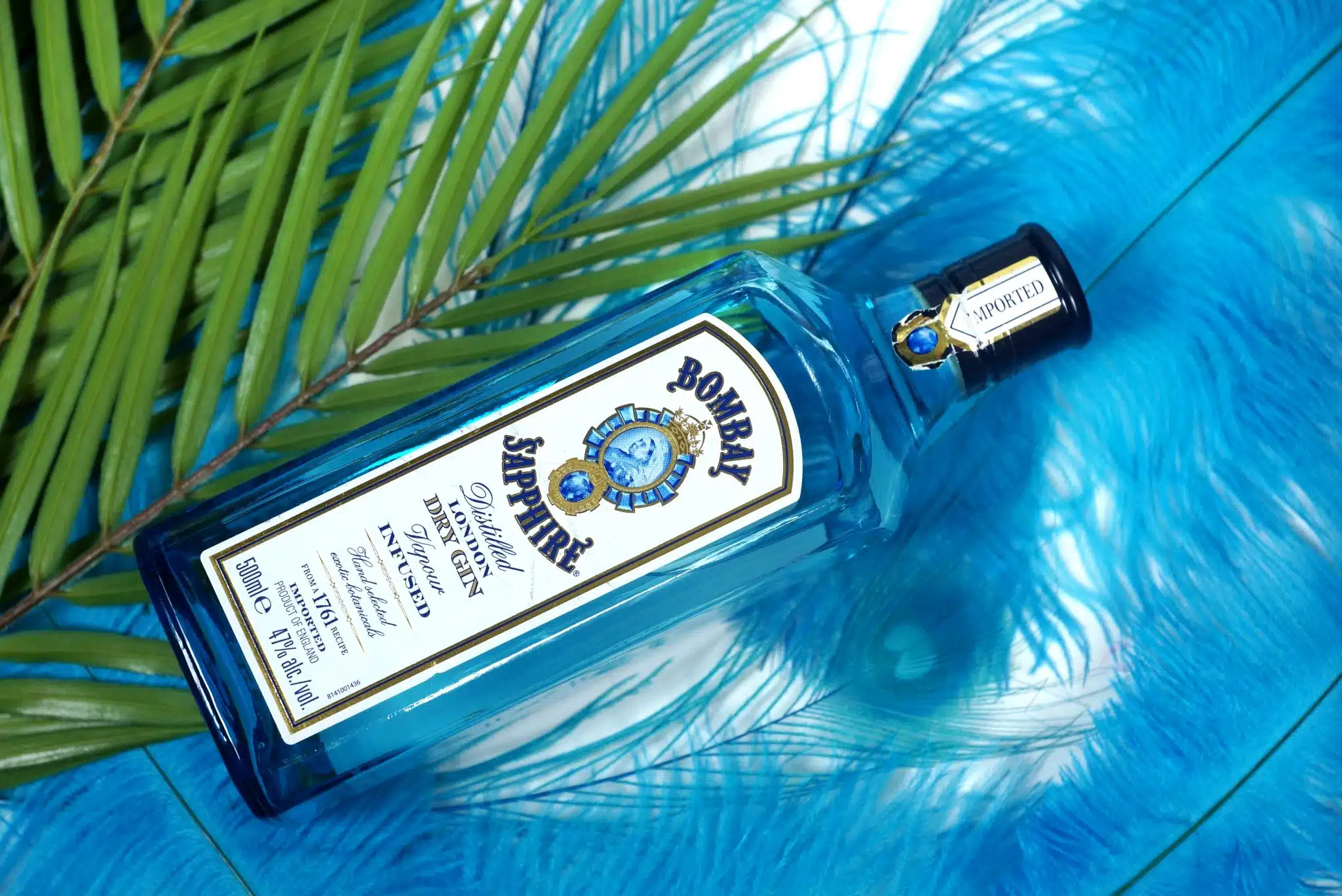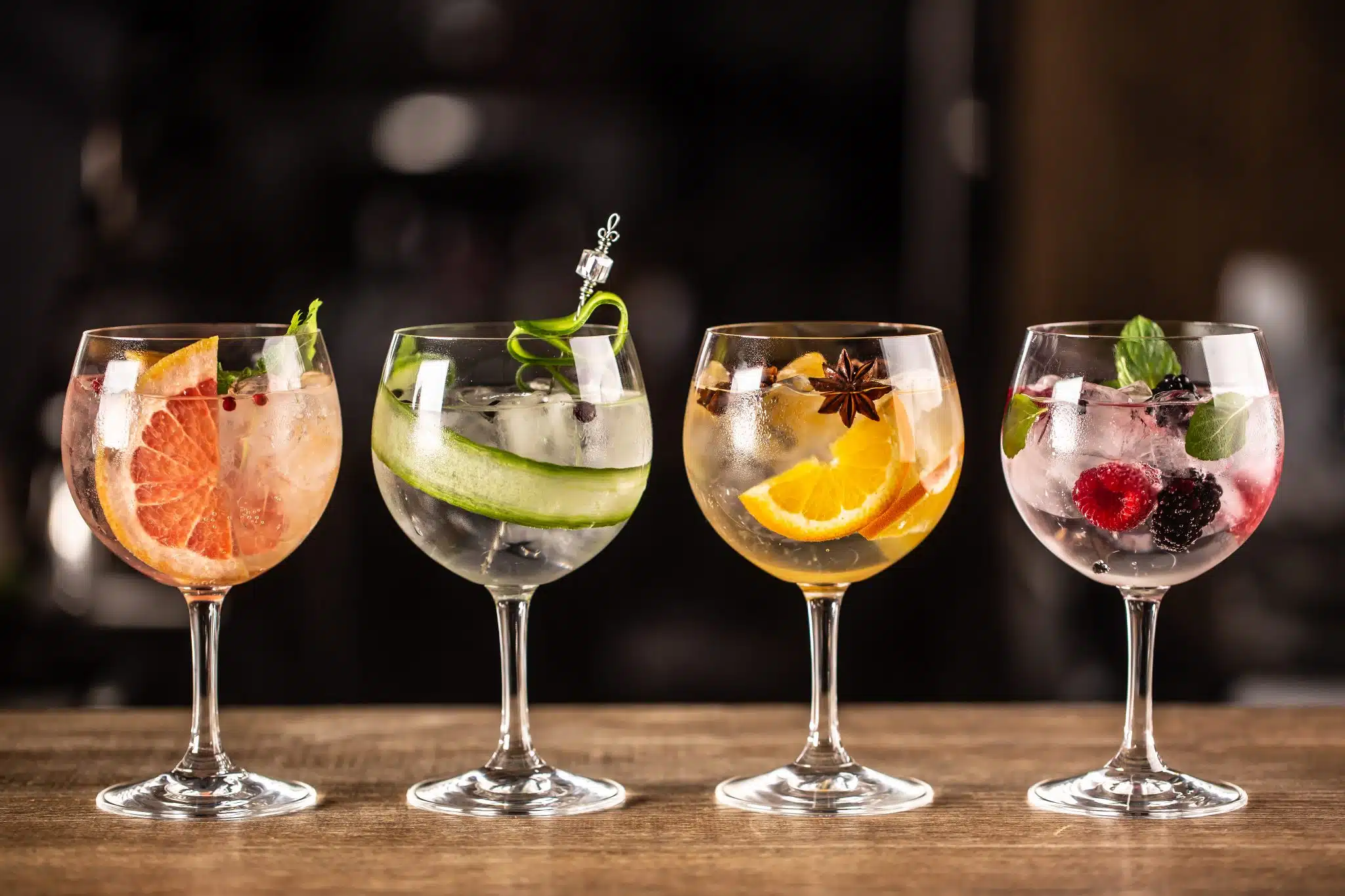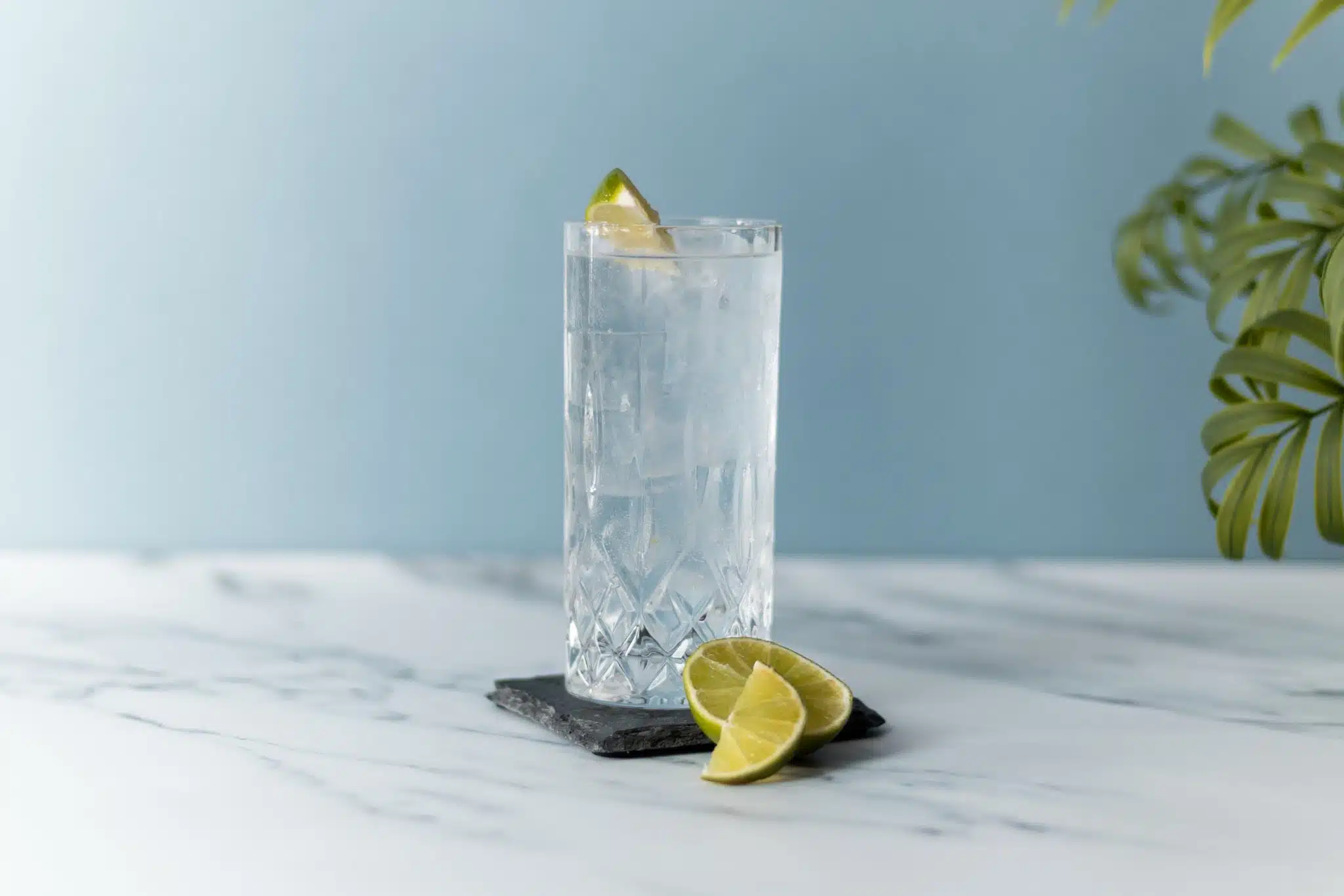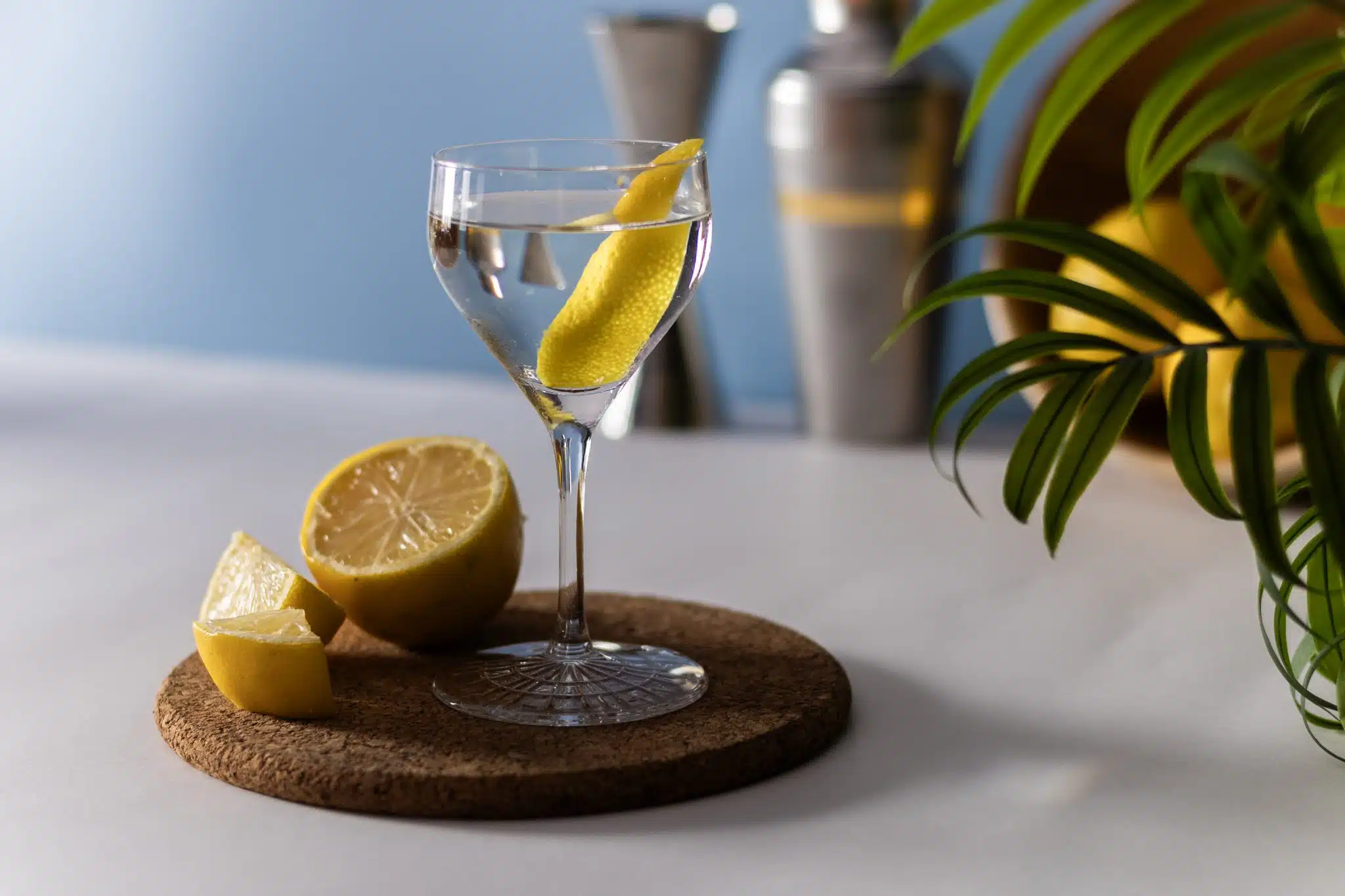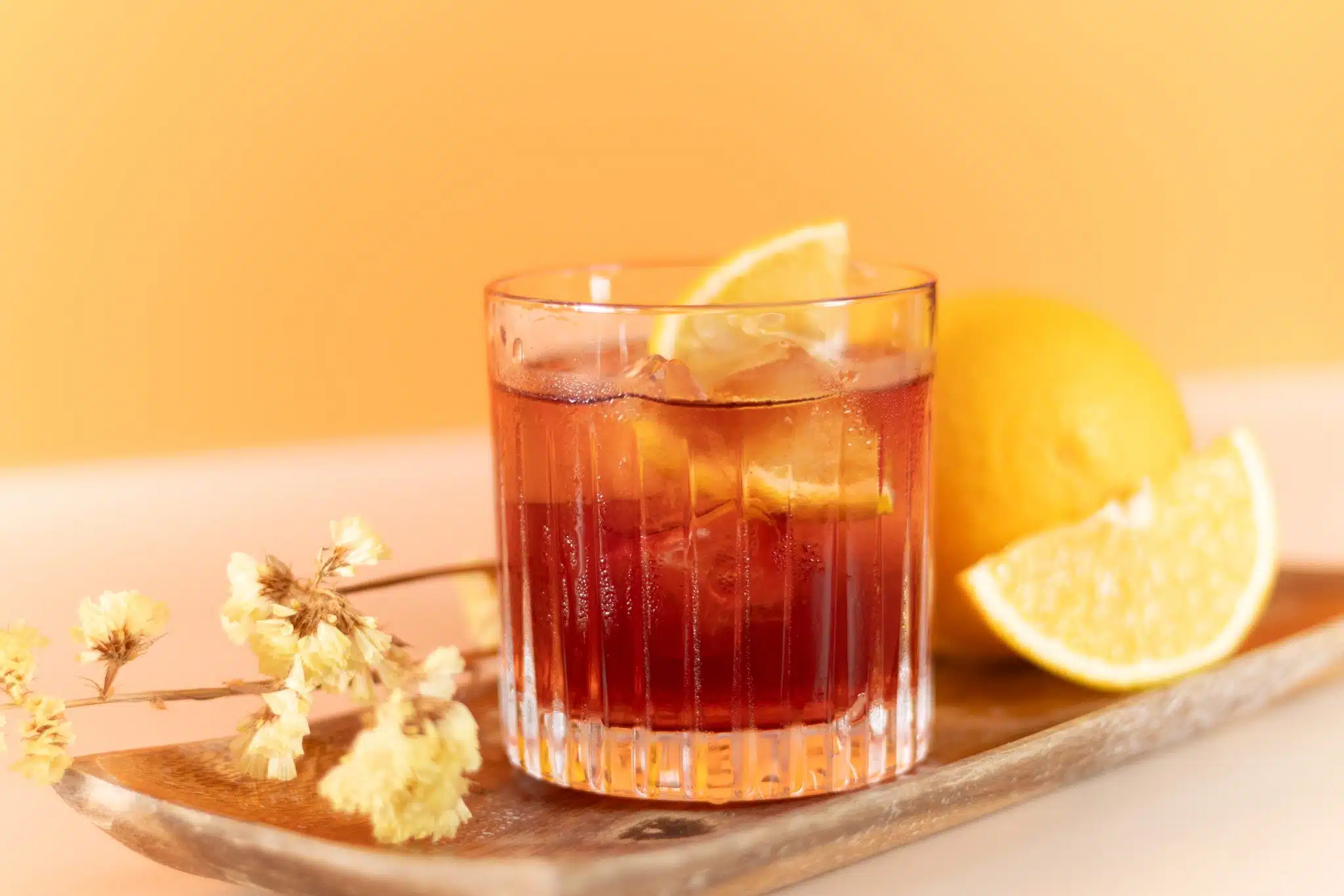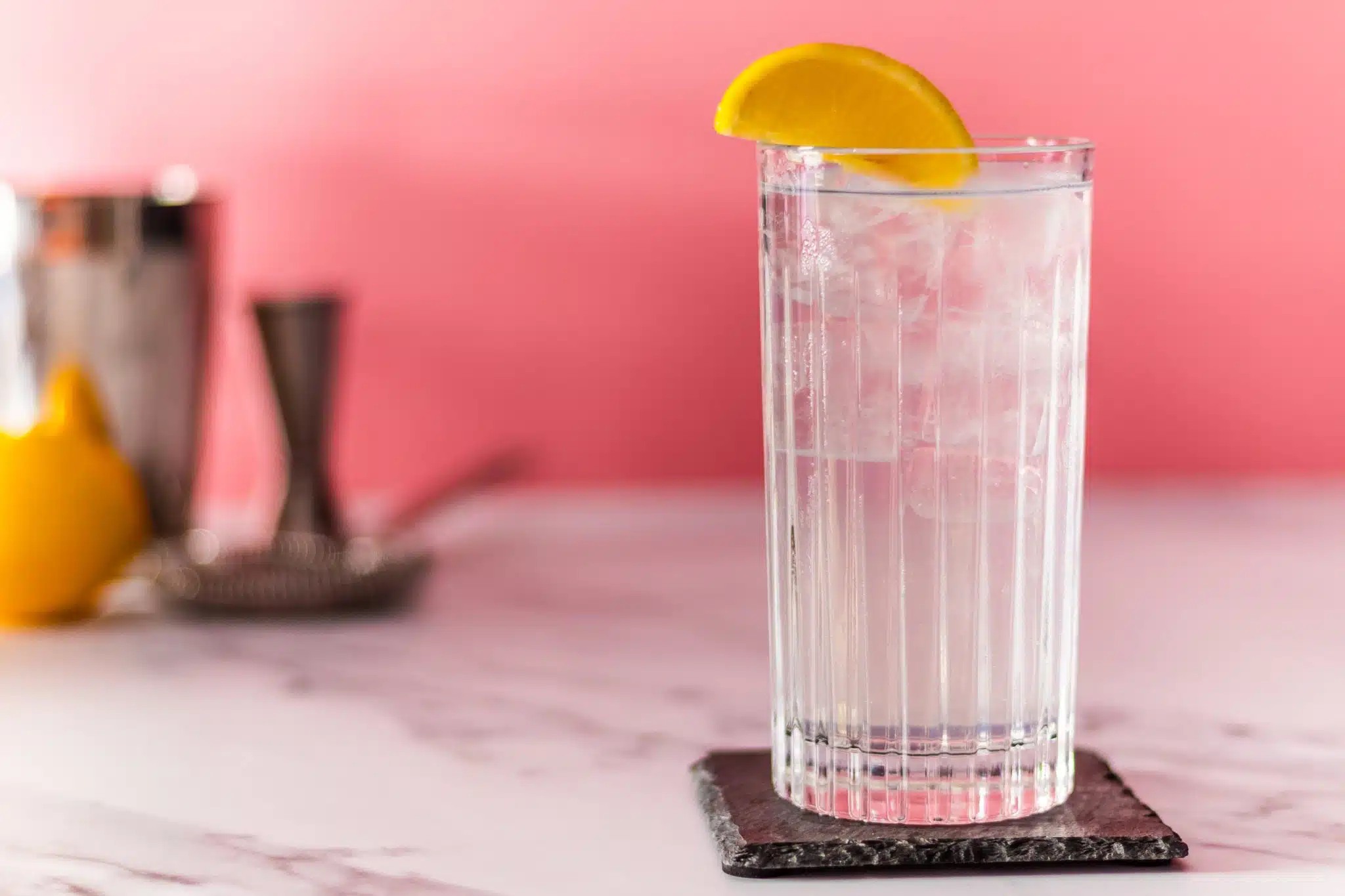Home / Gin
Gin
- Updated February 22, 2024
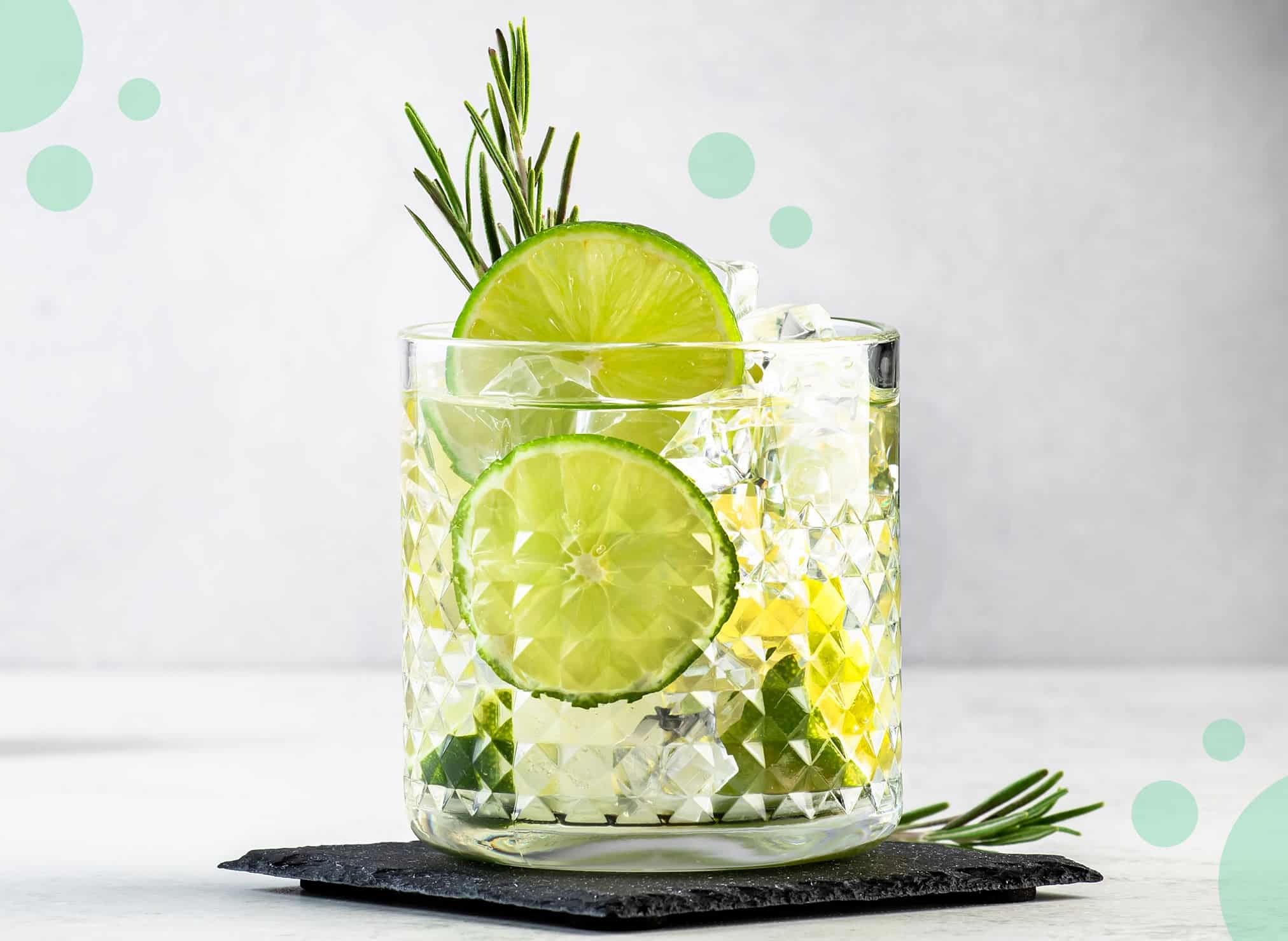
Gin Guide – What to Know Before You Shop Gin Online
What is Gin?
Gin is a distilled alcoholic beverage aromatized primarily with juniper berries. It started as a medicinal liquor but has evolved and is now enjoyed in various cocktails and mixes, with several types and brands available.
What are the different types of Gin?
London Dry Gin
London Dry Gin is popular for its bold and crisp flavor. It’s juniper-forward with noticeable citrus and spice notes. Despite the name, it can be made anywhere in the world.
Plymouth Gin
Plymouth Gin is sweeter and fruitier compared to London Dry. It has a Protected Geographical Indication, meaning true Plymouth Gin is only made in Plymouth, England.
Old Tom Gin
Old Tom Gin is sweeter than the London Dry and Plymouth types. It often has a softer juniper profile and can exhibit flavors of anise.
Genever
Genever is the Dutch precursor to gin. It has a malty flavor and a fuller body than other types, offering a richer and more robust taste.
Navy Strength Gin
Navy Strength Gin is a high-proof gin known for its bold and intense flavor profile. It was named “Navy Strength” because it’s flammable even when mixed with gunpowder.
New Western or Contemporary Gin
New Western or Contemporary Gin often places less emphasis on juniper and more on other botanicals, leading to a diverse range of flavors and aromatic profiles.
What is fruit gin?
Fruit gins are usually infused with fruit flavors and can be made by adding fruits during the distillation process or infusing fruits in the gin post-distillation. They offer a sweeter and more flavorful alternative to traditional gins, with various fruit flavors, such as raspberry, strawberry, and blackberry. Examples include Sloe Gin, which is infused with sloe berries, giving it a sweet and tart flavor, and is lower in alcohol content than other types.
What does Gin taste like?
Gin has a sharp, piney taste from juniper berries and can have notes of citrus, spice, or herbs, depending on the botanicals used.
The exact flavors vary according to their type. London Dry typically has a crisp, juniper-forward taste with pronounced citrus and spice notes, offering a bold and clean flavor. While similar to London Dry, Plymouth usually presents a slightly sweeter and fruitier palate. Old Tom carries a distinctly sweeter profile, often exhibiting anise flavors and a softer juniper taste. Finally, Genever offers a maltier and more robust flavor, distinguished by its richer and fuller body.
How much alcohol is in Gin?
Gin typically contains between 37.5% and 50% alcohol by volume (ABV), translating to 75 to 100 proof. Some varieties can have higher or lower alcohol content.
It typically holds a middle ground compared to other liquors. Vodka has a similar alcohol content, ranging from 37.5% to 50% ABV. Rum usually sits around 40% ABV for standard versions, but overproof rums can significantly exceed this, reaching levels above 75% ABV. Whiskey also possesses a comparable range of alcohol content, with most varieties falling between 40% and 50% ABV, although some cask-strength whiskeys can be much stronger.
Are there any Gin substitutes?
If you’re looking to swap out gin, you’ve got options. Vodka is a straightforward choice with a neutral taste. Aquavit offers a hint of botanicals like caraway and anise. For a smoky touch, consider tequila or mezcal. For those avoiding alcohol, Seedlip and Monday Gin give the flavor without the booze. Always think about the flavor you want when picking a substitute.
Top Gin Brands (Yes, Tanqueray and Hendrick’s are on the list…)
Bombay Sapphire
Bombay Sapphire is known for its light, clean taste, and many different flavors. It’s good for many cocktails, and many people like its balanced taste.
Tanqueray
Tanqueray has a bold, strong taste of juniper. It’s especially good for making a strong G&T.
Hendrick’s
Hendrick’s Gin stands out with its unique rose and cucumber flavors. It’s for those who like trying new and different flavors.
Beefeater
Beefeater mixes old and new with its citrusy and strong juniper taste.
Monkey 47
Monkey 47 is famous for its mix of 47 different flavors. It has a rich, detailed taste and costs more because of its high quality.
Gordon’s
Gordon’s has a simple, classic taste and is a choice for many. It’s affordable and works well in many drinks.
Sipsmith
Sipsmith offers a smooth, rich taste with strong juniper and citrus notes. It’s made in small amounts to keep its quality and taste consistent.
Roku
Roku is a Japanese gin with six special Japanese flavors, mixing traditional and oriental tastes. It’s known for its delicate, complex taste.
The Botanist
The Botanist is from Scotland and has 22 local flavors. It has a floral, herby taste, making it a choice for those who like complex, layered flavors.
Plymouth Gin
Plymouth Gin is sweet and fruity and great for those who like a softer, milder taste.
Where to buy Gin online?
Here are some online liquor stores where you can shop for your favorite bottle:
Drizly
Drizly has lots of choices. They are known for fast and easy delivery services, letting customers get their orders quickly.
Total Wine & More
Total Wine & More has a big collection of brands. The site also has customer reviews and ratings, helping buyers choose the right bottle.
How much does Gin cost – Price Ranges
The price ranges largely depend on factors like ingredients’ quality, the distillation process’s complexity, and brand reputation. Additionally, aspects like unique packaging, production region, alcohol content, and the exclusivity of limited editions also play crucial roles in the cost.
- Budget-Friendly
You can find budget-friendly gins, like Gordon’s and Seagram’s, which usually range between $10 and $20 per bottle. These options suit those who enjoy mixed drinks or cocktails and are looking for economical choices.
- Mid-Range
For those seeking a balance between price and quality, mid-range gins are usually priced between $20 and $50 per bottle. Brands like Tanqueray and Bombay Sapphire fall into this category, offering more refined flavors suitable for various cocktails.
- Premium
Premium gins such as Hendrick’s and Monkey 47 are available at the higher end, often costing $50 or more per bottle. These typically boast a more complex flavor profile and higher quality ingredients, making them a favorite for enthusiasts willing to pay a premium for enhanced taste and experience.
Why do we like Gin?
We like the different flavors of botanicals, like in Bombay Sapphire, that make it taste rich and different. We find gin great for making different cocktails; its many flavors work well in classics like the Negroni. We also like trying new craft gins like Monkey 47 with different and fun tastes. Plus, for those of us watching what we eat and drink, gin is a good friend—it has no sugars or carbs, especially when we pair it with light tonics.
How to drink Gin?
You can drink it neat, on the rocks, or mixed in cocktails:
- Sipping Neat
For a pure and unaltered experience, you can sip high-quality gin neat. This method allows you to fully appreciate the intricate flavors and aromas without any mixers to mask them.
- Gin and Tonic
When it comes to mixing, gin and tonic is a classic choice. This combination enhances the botanicals, creating a refreshing and balanced drink. A slice of lemon or lime complements the beverage well, adding a zesty kick.
- Mixed in Cocktails
To explore a variety of flavors, mix gin in cocktails. Classics like Martinis and Negronis highlight the versatility of gin by blending it with different ingredients. The spirit interacts with other cocktail flavors, offering a multifaceted tasting experience.
- With a Splash of Water
Adding a splash of water to gin can open up its flavors, making it a suitable option for those who find neat gin too strong. Water dilutes the alcohol content and softens the taste, allowing subtle flavors to come forward.
- On the Rocks
Pouring gin over ice is another way to enjoy it. The ice chills the spirit and slightly dilutes it, making the drink smoother and more refreshing. This method works well with fruity or flavored gins.
Popular Gin cocktails
Whether you prefer something sweet, tangy, or bold, there’s a gin cocktail out there for you:
Gin and Tonic
This mixes gin with tonic water and is usually garnished with a slice of lime or lemon. It’s a refreshing and straightforward cocktail that’s both bitter and sweet, perfect for a hot day.
Martini
The Martini combines gin and dry vermouth and is garnished with an olive or a lemon twist. It’s a strong, clear cocktail that’s smooth and dry, often enjoyed before dinner.
Negroni
The Negroni is a blend of gin, sweet vermouth, and Campari, usually garnished with an orange peel. It offers a balanced yet bold mix of sweet, bitter, and strong flavors.
Tom Collins
The Tom Collins mixes gin with lemon juice, sugar syrup, and soda water. It’s a fizzy and refreshing drink, typically garnished with a lemon slice and a cherry, serving as a thirst-quencher.
Gimlet
The Gimlet pairs gin with lime cordial (sweetened lime juice). This cocktail is tangy and sweet, typically served in a cocktail glass and garnished with a lime wheel.
Singapore Sling
The Singapore Sling combines it with cherry brandy, Benedictine, and pineapple juice, among other ingredients. It’s a fruity and complex cocktail, often enjoyed as a long drink.
French 75
The French 75 mixes gin with lemon juice, simple syrup, and champagne. It’s a bubbly and sharp cocktail, typically garnished with a lemon twist, perfect for celebrations.
Bramble
The Bramble blends gin with lemon juice, simple syrup, and crème de mûre. It’s a sweet, tangy drink, usually garnished with lemon and blackberry slices.
Aviation
The Aviation mixes gin with maraschino liqueur, crème de violette, and lemon juice. It’s a floral and refreshing cocktail, distinguished by its lovely lavender hue.
Clover Club
The Clover Club combines gin, raspberry syrup, lemon juice, and egg whites. It’s a frothy and flavorful drink, marked by its balance of sweet and tart flavors.
Related: Top Cocktails and Recipes List
What are the ingredients of Gin?
The primary ingredient in gin is juniper berries, which give gin its characteristic pine-like flavor. However, it often contains a variety of other botanicals to create unique flavor profiles. Below are some common ingredients found in gin:
- Juniper Berries: All gin must contain an essential ingredient, lending a sharp and refreshing pine flavor.
- Coriander Seeds: Often used to provide the gin a citrusy and spicy note.
- Angelica Root: Adds an earthy, herbal flavor and is believed to help bind the flavors of other botanicals.
- Citrus Peels: Lemon, orange, or grapefruit peels are common and impart a bright citrus note.
- Cardamom Pods: Provide a spicy, aromatic, and slightly sweet flavor.
- Cassia Bark or Cinnamon: Offers warm and sweet-spicy notes.
- Grains of Paradise: A spice that adds a peppery and citrusy flavor.
- Orris Root: Acts as a fixative, helping to preserve the aroma and flavor, and adds a floral note.
- Licorice Root: Contributes sweetness and a woody, earthy flavor.
- Nutmeg: Imparts a sweet, warm, and nutty flavor.
- Cubeb Berries: Provide a peppery and slightly pungent flavor.
These ingredients, along with the base spirit—usually a neutral grain alcohol—are integral to forming the diverse flavors of different varieties. The exact recipe and proportion of botanicals vary from one brand to another, and many producers keep their recipes a closely guarded secret.
How is Gin made?
Gin is made through several meticulous steps:
1. Ingredient Preparation
The process begins with selecting and preparing juniper berries and various botanicals like coriander and citrus peel, which are cleaned and prepared to ensure quality.
2. Base Spirit Production
Producers use grain alcohol as the neutral base spirit, which is created through the fermentation and distillation of grains to achieve the desired alcohol content and purity.
3. Botanical Infusion
Depending on the desired intensity and the recipe, the botanicals are then immersed in the neutral spirit for a specific period for flavor extraction.
4. Distillation
The infused spirit undergoes distillation to intensify flavors and remove impurities, with master distillers carefully controlling the process to capture the best flavors and discard undesirable elements.
5. Dilution
Post-distillation, the gin is diluted with demineralized water to attain the standard 40% alcohol by volume (ABV), based on the initial strength and target ABV.
6. Bottling
The final step involves bottling, sealing, labeling, and packaging, complying with relevant regulations before distribution to retailers and hospitality establishments.
Food Pairing
Gin has many different flavors, making it easy to pair with various foods.
- Citrus Gins taste great with seafood, like grilled shrimp with lime. The gin enhances the citrus flavors in the dish.
- Herby Gins go well with salads and green dishes. A simple salad with an herb dressing matches these well.
- Sweet Gins pair well with desserts and sweet starters. A fruit tart or berry dish can match the sweet taste.
- Savory Gins can be paired with savory dishes, like mushroom risotto. The creamy texture of the risotto and the sharpness of the gin balance each other out.
Nutritional facts
The USDA provides the nutritional information for a standard shot of Gin, which weighs 42 grams or 1.5 ounces. Here’s a table summarizing the nutritional facts:
| Nutrient | Amount | % Daily Value |
| Calories | 97 kcal | – |
| Total Fat | 0 g | 0 % |
| Saturated Fat | 0 g | 0 % |
| Trans Fat | 0 g | 0 % |
| Cholesterol | 0 mg | 0 % |
| Sodium | 0 mg | 0 % |
| Total Carbohydrate | 0 g | 0 % |
| Dietary Fiber | 0 g | 0 % |
| Sugars | 0 g | 0 % |
| Protein | 0 g | 0 % |
| Vitamin D | 0 mcg | 0 % |
| Calcium | 0 mg | 0 % |
| Iron | 0 mg | 0 % |
| Potassium | 1 mg | 0 % |
This table outlines that gin is a zero-carb, zero-fat, and zero-protein beverage, with the major caloric content coming from alcohol.
History and Origin of Gin
Gin started in the Netherlands in the 1600s, with many attributing its creation to Dr. Franciscus Sylvius. Back then, it was known as “jenever” and served dual purposes as a drink and a medicine. It didn’t take long for gin to make its way to England, thanks to English soldiers who discovered it in the Netherlands during a war. Once it arrived, gin soared in popularity in England. The drink became so popular, in fact, that it started causing some problems, leading the government to step in with new rules controlling how much gin was made and sold.
As time passed, the British tweaked the gin-making process, creating a new, distinct type known as London Dry Gin, notable for its bold juniper flavor. The popularity of gin continued to spread far and wide along with the expanding British territories, finding a particular niche in warmer regions. In these places, people often mixed gin with tonic as a tasty way to ward off malaria.
FAQs
- How is gin different from vodka? Gin is flavored with botanicals, while vodka is typically distilled to be neutral, with no distinctive flavor or aroma.
- Is gin gluten-free? Most gin is distilled from grains that contain gluten, but the distillation process usually removes gluten proteins. However, some people with gluten sensitivities prefer grain-free options.
- Can gin go bad? Gin has an indefinite shelf life when stored properly, but its flavor can degrade over time.
- How should I store gin? Store gin in a cool, dark place, upright to prevent the cork from drying out.
- Can I drink gin straight? Yes, many people enjoy sipping high-quality gin straight to appreciate its flavors.
- Is gin made only in England? No, it’s is made worldwide, each with its unique local twist.
- Is gin keto-friendly? Gin has zero carbs, making it suitable for a keto diet.
- Does gin have any health benefits? In moderation, gin can offer some health benefits, like antioxidants from botanicals and improving digestion.
- Can gin help with weight loss? While gin is lower in calories than sugary alcoholic beverages, moderation is key to weight management.






